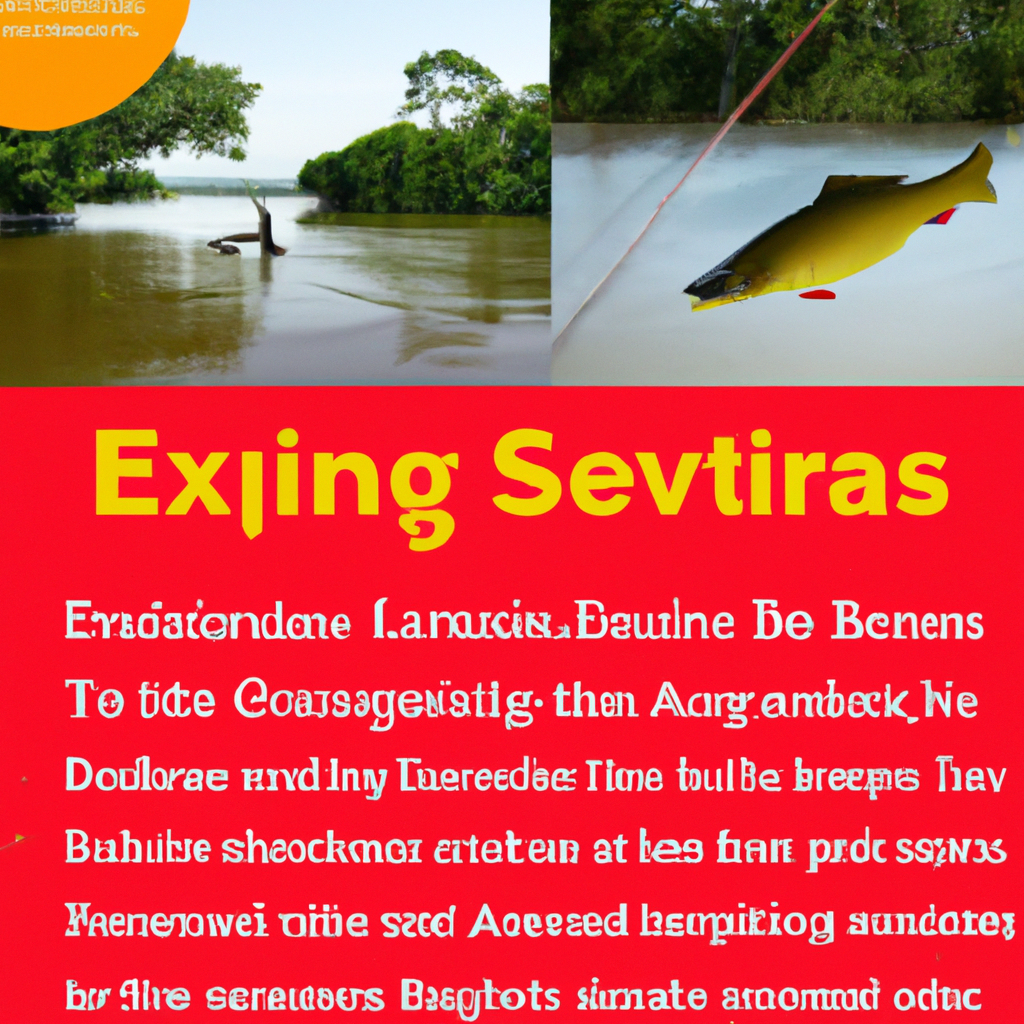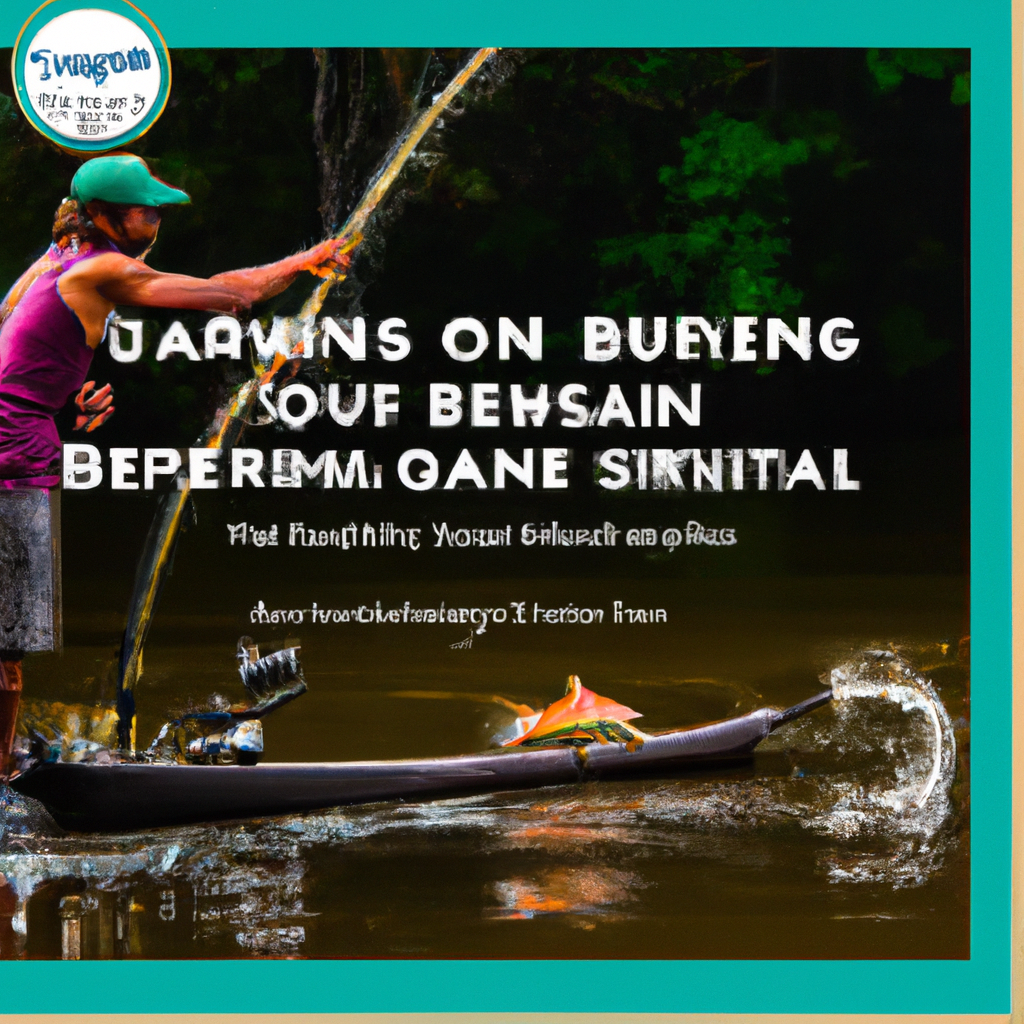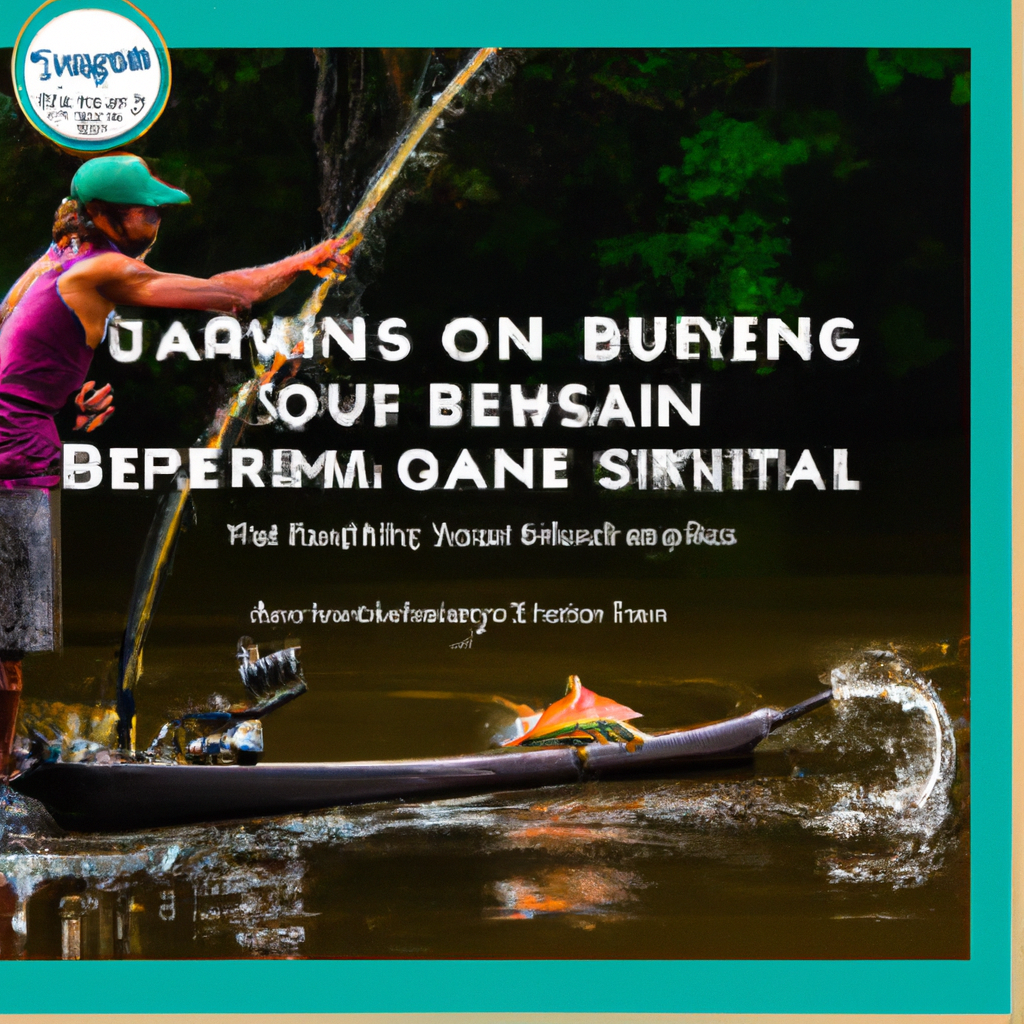So you’ve always been intrigued by the idea of fishing, but have never actually given it a try? Well, lucky for you, Suriname’s rivers are the ideal playground for beginners looking to dip their toes into the world of fishing. Whether you’re a seasoned traveler or a local resident, this beginner’s guide will equip you with all the essential information you need to know before casting your line in Suriname’s pristine waters. From choosing the perfect fishing spot to selecting the right equipment, we’ve got you covered on your exciting fishing journey in Suriname’s rivers. So grab your fishing rod and let’s dive right in!
Understanding Suriname’s Rivers
Suriname, a small South American country located on the northeastern coast of the continent, is a land abundant in natural beauty, with its rivers being a prominent feature of its landscape. Suriname is home to many rivers, varying in size and characteristics, which play a vital role in the country’s ecosystem and provide numerous recreational opportunities for fishing enthusiasts.
Geographical Overview of Suriname
Situated between Guyana to the west and French Guiana to the east, Suriname is a tropical paradise blessed with an intricate network of rivers. The country’s main rivers include the Suriname River, Marowijne River, Coppename River, and Saramacca River, among others. These rivers are fed by the country’s vast rainforest, which covers over 80% of Suriname’s land area, and flow into the Atlantic Ocean.
Importance of Rivers in Suriname
Rivers hold great significance in Suriname, both ecologically and culturally. The rivers serve as a critical source of freshwater, supporting a diverse ecosystem of aquatic life and providing water for drinking, irrigation, and transportation. They are also essential in maintaining the delicate balance of the rainforest, acting as natural highways for the dispersal of seeds and providing habitats for various species.
Furthermore, the rivers of Suriname hold cultural importance for the indigenous communities residing along their banks. These communities rely on the rivers for their livelihoods, engaging in fishing and other traditional activities that have been passed down through generations.

Popular Rivers for Fishing in Suriname
Suriname boasts a wealth of fishing opportunities, attracting anglers from around the world who seek the thrill of catching unique fish species in its pristine rivers. Some of the most popular fishing destinations in Suriname include:
Suriname River
As the country’s largest and longest river, the Suriname River offers a diverse range of fishing experiences. From its upper reaches, where piranha and peacock bass can be found, to its lower reaches, where tarpon and snook roam, this river provides ample opportunities for anglers of all skill levels.
Marowijne River
Flowing along the border with French Guiana, the Marowijne River is renowned for its rich biodiversity. This river is home to an abundance of fish species, including arapaima, catfish, and several types of cichlids. Fishing in the Marowijne River provides a unique chance to explore the unspoiled beauty of Suriname’s tropical wilderness.
Coppename River
The Coppename River offers a tranquil setting for fishing enthusiasts, with its picturesque surroundings and calm waters. Anglers can encounter various fish species here, such as piranha, peacock bass, and tilapia, while enjoying the serenity of the river and its lush greenery.
Getting Started
Before embarking on your fishing adventure in Suriname, there are a few essential steps to prepare yourself for an enjoyable and successful experience.
Obtaining the Necessary Fishing Permits
To fish legally in Suriname, it is crucial to obtain the required fishing permits. These permits can be obtained from the Ministry of Agriculture, Animal Husbandry, and Fisheries, or through approved local fishing outfitters. Make sure to familiarize yourself with the fishing regulations and restrictions to ensure compliance and preserve the sustainability of the fish population.
Choosing the Right Fishing Gear
Selecting the appropriate fishing gear is essential for a successful fishing trip. Suriname’s rivers offer a wide range of fishing opportunities, so it is crucial to bring gear suitable for the species you wish to target. Whether you choose to engage in fly fishing, spinning, or baitcasting, ensure that your equipment is appropriate for the fish you expect to encounter.
Essential Fishing Techniques for Beginners
If you are new to fishing or unfamiliar with the Surinamese rivers’ angling techniques, it is advisable to familiarize yourself with some basic fishing techniques. Casting and retrieving, trolling, bottom fishing, fly fishing, and jigging are popular techniques used in Suriname. Take the time to learn and practice these techniques to increase your chances of a successful catch.
Suriname’s Fish Species
Suriname’s rivers are teeming with a wide variety of fish species, each offering a unique angling experience. Here are some of the common fish species you can expect to encounter while fishing in Suriname:
Peacock Bass
One of the most sought-after trophy fish in Suriname is the peacock bass. Known for its aggressive strikes and vibrant colors, the peacock bass provides an exhilarating angling experience. The Suriname River and its tributaries are prime locations for targeting this species.
Arapaima
Suriname is home to the legendary arapaima, one of the largest freshwater fish in the world. Catching an arapaima is a true feat, as they are known for their immense size and strength. The Marowijne and Suriname rivers are popular spots to target this prehistoric creature.
Piranha
Famous for their razor-sharp teeth and ferocious reputation, piranhas can be found in various Surinamese rivers. These carnivorous fish are abundant in the Suriname, Marowijne, Coppename, and Saramacca rivers. Anglers seeking a thrilling challenge will find joy in targeting these notorious predators.
Freshwater Stingray
For those seeking a unique fishing encounter, catching a freshwater stingray is an unforgettable experience. The Suriname and Marowijne rivers are known for hosting these elusive creatures. It is important to exercise caution when targeting this species due to their size and potentially dangerous sting.

Best Fishing Spots for Specific Species
To maximize your chances of catching specific fish species, it is crucial to explore the best fishing spots in Suriname. Here are some recommendations for targeting particular fish species:
Peacock Bass Hotspots
When it comes to peacock bass, the Upper Suriname River and Pikin Saron Creek offer prime fishing grounds. Anglers can explore the river’s stunning scenery while targeting this highly prized sportfish.
Arapaima Hotspots
For arapaima fishing, the Marowijne River near the village of Galibi is a popular location. It is an area renowned for its arapaima population, providing anglers with an incredible opportunity to hook these massive fish.
Piranha Hotspots
Piranhas can be found throughout various rivers in Suriname, but the Suriname River near the village of Apoera and the Marowijne River are particularly known for their piranha populations. These locations offer exciting challenges for anglers looking to test their skills against these formidable predators.
Freshwater Stingray Hotspots
To target freshwater stingrays, the Suriname and Marowijne rivers are the primary locations to explore. Hiring an experienced guide familiar with the specific areas where these creatures inhabit is highly recommended for a safe and successful stingray fishing experience.
Fishing Regulations and Restrictions
To ensure the sustainability of Suriname’s fish populations, it is crucial for anglers to abide by fishing regulations and restrictions. These regulations may include catch limits, size restrictions, and specific bans on certain species during spawning periods. Familiarize yourself with the local fishing laws to help preserve Suriname’s natural resources for future generations of anglers.
Preparing for Your Fishing Trip
Preparing adequately for your fishing trip is essential for a safe and enjoyable experience in Suriname’s rivers. Consider the following factors when getting ready for your adventure:
Researching Accommodation Options
Suriname offers a variety of accommodation options to suit different preferences and budgets. Whether you prefer staying in a comfortable lodge or immersing yourself in the natural surroundings of a riverside campsite, researching and booking accommodations in advance is advisable.
Packing the Right Gear and Supplies
Aside from fishing gear, it is crucial to pack essentials such as sunscreen, insect repellent, a hat, polarized sunglasses, and appropriate clothing for the tropical climate. Don’t forget to bring a first aid kit, as well as any necessary medications.
Safety Precautions and Emergency Preparedness
Always prioritize safety while fishing in Suriname’s rivers. Be aware of local conditions such as strong currents or wildlife that may pose a threat. It is also wise to inform a reliable contact about your fishing plans, including the expected duration of your trip and the location. Carry emergency essentials such as a fully charged mobile phone, a compass or GPS device, and extra food and water in case of unforeseen circumstances.
Popular Fishing Methods
Suriname’s rivers offer diverse fishing opportunities, and knowing various fishing methods will enhance your chances of success. Here are some popular fishing methods employed by anglers in Suriname:
Casting and Retrieving
Casting and retrieving is a versatile technique suitable for targeting various fish species. Using lures or bait, anglers cast their line into the water and retrieve it at varying speeds to imitate the movement of prey, enticing fish to strike.
Trolling
Trolling involves dragging a baited line behind a moving boat to cover a larger area of water. This technique is effective for targeting predatory fish such as peacock bass and tarpon, as it simulates the movement of a fleeing prey.
Bottom Fishing
Bottom fishing is a technique where the bait is presented on or near the riverbed to attract bottom-dwelling fish. This method is commonly used for catching catfish, which are abundant in Suriname’s rivers.
Fly Fishing
Fly fishing is a popular angling method that requires skilful casting and manipulation of artificial flies made from feathers, fur, and other materials. This technique is particularly enjoyable for targeting peacock bass and other aggressive fish species in Suriname’s rivers.
Jigging
Jigging involves vertically dropping a weighted jig lure into the water and manipulating it to mimic the movements of prey. This method is highly effective for catching predatory species such as tarpon and pike.
Bait and Lures
Selecting the right bait and lures is crucial for enticing fish to strike. Understanding the preferences of specific fish species and matching them with appropriate bait and lures can greatly increase your chances of success. Consider the following factors when choosing the right bait and lures:
Choosing the Right Bait for Different Fish Species
Different fish species have distinct preferences when it comes to bait. For example, peacock bass are often enticed by live bait such as small fish or frogs, while piranhas are more likely to bite on chunks of meat or fish carcasses. Research the preferred diet of the fish species you intend to target and select the appropriate bait accordingly.
Types of Fishing Lures and Their Effectiveness
Fishing lures come in various shapes, sizes, and materials, each designed to attract fish in different ways. Popular lures include crankbaits, soft plastics, spoons, and topwater lures. Experimenting with different lures and observing fish behavior can help determine which lures are most effective in specific fishing situations.
Tips for Bait Presentation
Proper bait presentation is essential for enticing fish to strike. When using live bait, ensure that it appears natural and lively in the water. For lures, vary your retrieval speeds and incorporate pauses to mimic the movements of injured prey, triggering fish to strike.
Fishing Techniques for Specific Species
Different fish species in Suriname’s rivers require specialized techniques for a successful catch. Here are some tips for targeting specific fish species:
Best Techniques for Catching Peacock Bass
Peacock bass are aggressive predators that can be caught using a variety of techniques. Effective methods include topwater lures that mimic baitfish on the water’s surface, as well as crankbaits and jigs that imitate wounded prey. Casting near underwater structures such as fallen trees or rocky outcrops often yields excellent results.
Effective Methods for Catching Arapaima
Arapaima are known for their powerful strikes and immense size, making them a challenging but rewarding target for anglers. Live bait, such as small fish or large chunks of meat, can be used to entice arapaima to bite. Patience and persistence are key, as arapaima often require careful observation and precise casting to hook successfully.
Mastering the Art of Catching Piranha
Piranhas are notorious for their razor-sharp teeth and aggressive behavior. To catch piranha, use live bait such as small fish or chunks of meat. It is important to remain vigilant and ready to set the hook as soon as you detect a bite, as piranhas are known for their lightning-fast strikes.
Tips for Landing a Freshwater Stingray
Catching a freshwater stingray requires special precautions due to their potentially dangerous stings and immense size. It is advisable to hire an experienced guide who is familiar with safe handling and unhooking techniques. Heavy tackle and sturdy equipment are essential when targeting freshwater stingrays to ensure a successful and safe catch-and-release experience.
Fishing Etiquette and Conservation
Respecting local fishing customs and traditions is essential when fishing in Suriname’s rivers. Here are some guidelines for practicing good fishing etiquette and promoting conservation:
Respecting Local Fishing Customs and Traditions
Observe and respect the fishing customs and traditions of the local communities living along the riverbanks. Seek permission before fishing in indigenous territories and adhere to any guidelines or restrictions they may have in place. Avoid damaging or littering in the fishing areas and show respect for the local culture and environment.
Proper Catch and Release Practices
To promote sustainable fishing and conserve fish populations, it is important to practice proper catch and release techniques. Handle fish with care, minimizing stress and damage to their scales and fins. Use barbless hooks to facilitate easy hook removal, and release the fish promptly after capture to ensure its survival.
Protecting the Environment and Fish Populations
Be conscious of the environment while fishing in Suriname’s rivers. Avoid leaving behind any trash or litter, and dispose of waste properly. Follow designated fishing areas and respect any protected zones that are crucial for fish spawning and habitat preservation.
Recommended Fishing Guides
To enhance your fishing experience in Suriname, considering hiring an experienced fishing guide who is familiar with the rivers, fish species, and local regulations. Here are some factors to consider when choosing a fishing guide:
Experienced Fishing Guides in Suriname
Suriname offers a number of experienced fishing guides who can provide valuable knowledge and guidance. Look for guides who have extensive experience fishing in Suriname’s rivers and possess a deep understanding of the local ecosystems and fish species.
What to Look for in a Fishing Guide
When selecting a fishing guide, consider their knowledge of different fishing techniques, ability to cater to different skill levels, and understanding of the targeted fish species. A good fishing guide should prioritize safety, have excellent communication skills, and be able to create a memorable and enjoyable fishing experience.
Tips for Communicating with a Fishing Guide
Clear and effective communication with your fishing guide is key to a successful fishing trip. Discuss your expectations, preferences, and any specific fish species you hope to target. Seek their advice on fishing techniques, location selection, and local regulations to ensure a smooth and enjoyable fishing experience.
Other Recreational Activities
Suriname offers more than just fishing opportunities. Take advantage of the country’s diverse natural beauty and indulge in other recreational activities:
Exploring Suriname’s Wildlife
Suriname is a biodiversity hotspot, with an abundance of plant and animal life. Embark on nature walks or guided tours to explore the rainforest and encounter exotic wildlife such as monkeys, sloths, and jaguars. Immerse yourself in the sights and sounds of Suriname’s natural wonders.
Bird Watching Opportunities
Suriname’s rivers and rainforests are a paradise for birdwatching enthusiasts. With over 700 bird species recorded, including macaws, toucans, and the elusive harpy eagle, birdwatching in Suriname offers unmatched opportunities to spot and photograph rare and beautiful avian species.
Excursions to Indigenous Communities
Suriname is home to diverse indigenous communities, each with its own rich culture and traditions. Consider joining organized excursions to visit these communities, where you can immerse yourself in their way of life, learn about their customs, and appreciate their connection to the rivers and nature.
Suriname’s rivers offer a unique and captivating fishing experience that combines natural beauty, diverse fish species, and cultural exploration. Whether you’re a seasoned angler or a beginner looking for an exciting adventure, Suriname’s rivers are waiting to be explored. By following the necessary steps to prepare for your trip, respecting local customs and regulations, and practicing sustainable fishing techniques, you can ensure a rewarding and memorable fishing experience in this remarkable South American destination.
